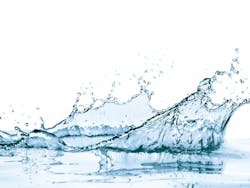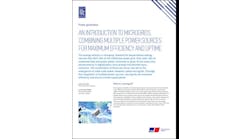Microgrids Restore Water, Wastewater Services for Isolated Puerto Rico Communities
New water and wastewater systems powered by solar plus storage microgrids are reviving life and livelihoods in remote areas of Puerto Rico still struggling to recover from 2017’s Hurricane Maria.
By kubais/Shutterstock.com
In hard-to-reach areas of Puerto Rico where grid power has only recently been restored, six microgrid-powered pumping systems are now up and running, thanks to a partnership between South Carolina-based non-profit Water Mission and Hawaii-based energy storage company Blue Planet Energy.
The Puerto Rico Electric Power Authority (PREPA) did not restore utility grid service in the town of Corozal in Puerto Rico’s mountainous central region until recently, leaving residents without public power or water services. The community turned to a gasoline-fueled generator to pump portable water a few hours per week. Residents fled the region because of the hardship; the population dropped from 120 to 60 families, according to Blue Planet and Water Mission.
Join us at Microgrid 2019 for announcement of the Greater Good Award winners.
Working with Water Mission and local installers, Blue Planet installed a 16-kWh battery system and integrated it with a 7-kW solar photovoltaic array at the pumping station in Corozal. Lithium-ferrous-phosphate (LFP) batteries form the core of Blue Planet’s system.
Power costs drop 75% with microgrids
Corozal’s solar-storage-fueled pumping system works 12 hours a day, and it’s saving the community money.
“The installed solar-plus-storage systems provide ongoing operational cost reductions for the communities, as well as resiliency in the event of future grid interruptions,” Joe Schwartz, market development lead for Blue Planet Energy, told Microgrid Knowledge. “We’ve received reports that in its first month of operation the solar-plus-storage system deployed in Corozal resulted in a utility-power cost reduction from approximately $1,200/month to $300/month. That represents a 75% drop in power expenses for community members,” Schwartz said in an interview.
All six of the pumping systems run independently of the island’s public water utility, Puerto Rico Aqueduct and Sewer Authority (PRASA), which serves 96% of residents, Schwartz said.
“The sites we redeveloped with Water Mission blend power from multiple sources including solar arrays, energy storage, backup engine generators and the grid. If utility power is present, these systems export excess energy to the utility grid, which lowers monthly operating costs for the communities,” Schwartz said. “Due to their typically remote locations in the island’s interior and small populations of residents, many non-PRASA communities were the last ones to have power restored after the hurricane. At this point, approximately two years after hurricane Maria, grid power has been restored to each of the sites we redeveloped with resilient solar-plus-storage systems.”
On a mission
Water Mission has installed more than 1,100 solar power systems in disaster response over 16 years, working alongside the EPA, FEMA and other organizations in more than 40 communities. Because the homes often have their own septic systems, restoring water services also resolves potential sanitation issues.
Blue Planet Energy first connected with Water Mission after Hurricane Maria.
“One of Water Mission’s core competencies is deploying or restoring clean water systems as part of disaster relief efforts. Blue Planet Energy is also a mission-driven organization. We began shipping our Lithium Ferrous Phosphate battery systems to Puerto Rico to restore power and water systems on the island in the aftermath of Maria. One of Blue Planet Energy’s criterion for market evaluation is if our technology can provide not only environmental but also humanitarian benefits during the crises that often follow extreme weather events,” Schwartz said.
Track news about how microgrids are bringing relief to Puerto Rico. Subscribe to the free Microgrid Knowledge newsletter.







